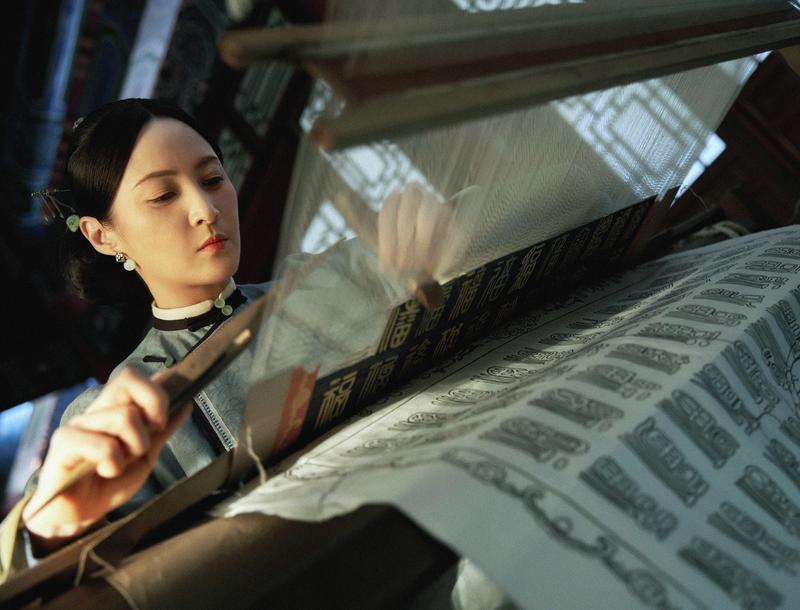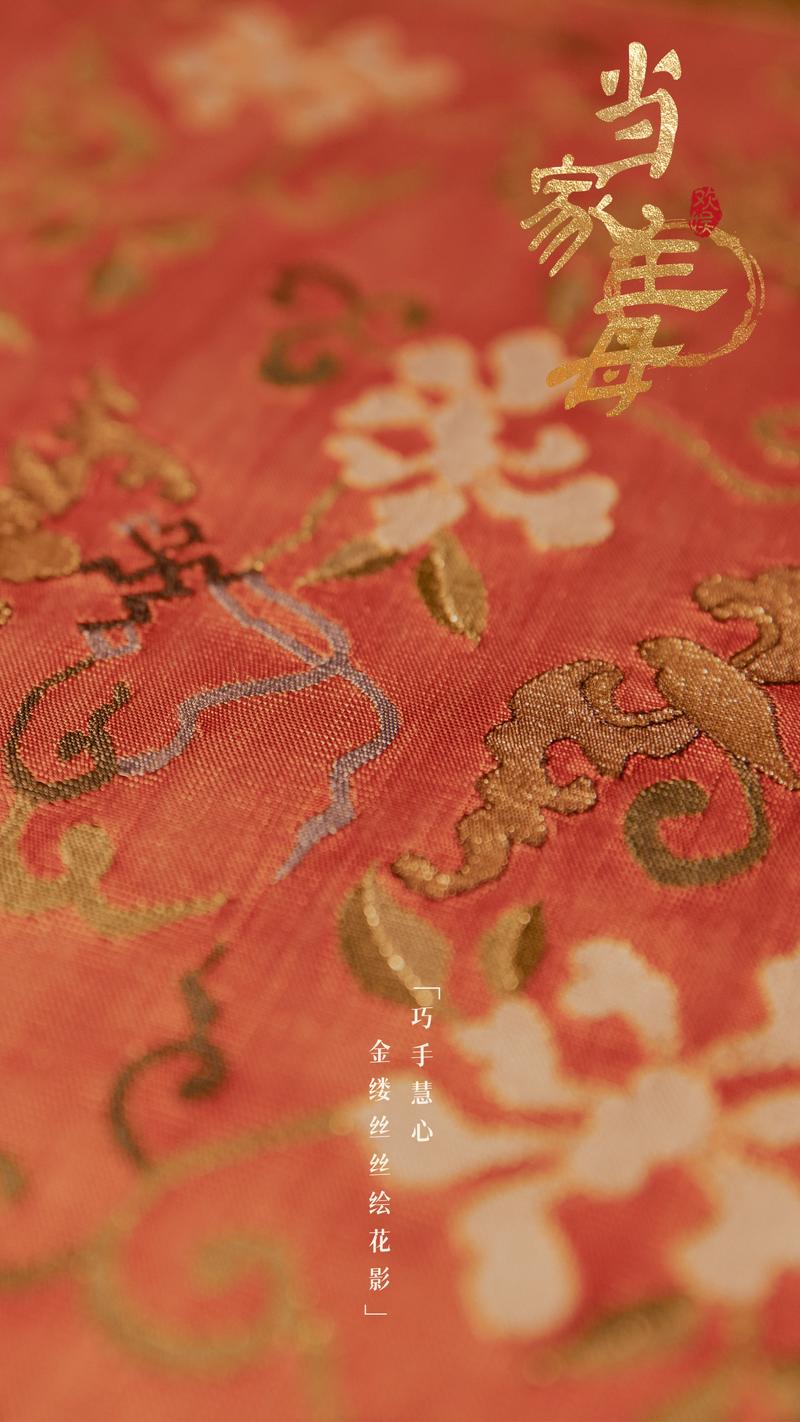New series inspired by ancient silk-weaving technique makes online debut, Xu Fan reports.
 Marvelous Women sheds light on the centuries-old craftsmanship of silk tapestry. Jiang Qinqin plays the role of a veteran weaver in the series. (PHOTO PROVIDED TO CHINA DAILY)
Marvelous Women sheds light on the centuries-old craftsmanship of silk tapestry. Jiang Qinqin plays the role of a veteran weaver in the series. (PHOTO PROVIDED TO CHINA DAILY)
In July last year, director Guo Hao paid a visit to Suzhou Museum in East China's Jiangsu province. It was an irritably hot summer afternoon, but he soon felt cool and tranquil after stumbling upon an elderly craftswoman.
As one of the museum's cultural activities, the woman was sitting in front of a big loom, demonstrating the traditional craft called kesi, a type of Chinese silk tapestry weaving technique.
Through a perfect coordination of hand and foot movements, a piece of silk work-featuring birds perching upon a twig in a garden-was shaped from a large number of threads.
Guo had a conversation with the woman, who started to learn kesi at 18 years old.
The technique, which blends raw silk used for vertical threads and colorful boiled-off silk for horizontal threads, prevailed during the Song Dynasty (960-1279) and earned a wider popularity during the Qing Dynasty (1644-1911), with most artworks conveying auspicious blessings or replicating famous brush paintings.
In 2006, the craftsmanship in Suzhou was inscribed in the first list of national intangible cultural heritage and added to UNESCO's list of Intangible Cultural Heritage in 2009.
"I asked her if she had ever felt bored with engaging in such repetitive work day after day. Surprisingly, she said she had never thought of it that way. Instead, she always felt happy with an inner peace while sitting in front of a loom," Guo says.
The answer helped him to pitch a new 40-episode series, Marvelous Women, which started running on three of the country's most popular streaming sites-iQiyi, Youku and Tencent Video-on Nov 8.
Co-helmed by Guo and director Wang Xiaoming, the drama chronicles the legendary stories of two women during the Qing Dynasty. Shen Cuixi, the determined wife of a local silk weaving tycoon, carries on the burden to steer the family business to prosperity after her husband encounters an "accident". Zeng Baoqin, once a spoiled daughter of a former official, regains the dignity of life after falling from grace due to her father being found guilty.
 A poster of Marvelous Women features a piece of silk tapestry woven with traditional kesi technique. (PHOTO PROVIDED TO CHINA DAILY)
A poster of Marvelous Women features a piece of silk tapestry woven with traditional kesi technique. (PHOTO PROVIDED TO CHINA DAILY)
Despite starting in the tale as a couple of rivals, the two heroines, both excelling in silk-weaving techniques, turn to join hands to save the family. Shen later opens her own business and begins to train more women to help them earn a better life in the prejudiced society.
A native of East China's Shandong province, Guo has participated in the production of dozens of TV series, including biographical drama Mao Zedong. But Marvelous Women has fostered his knowledge of kesi that he first obtained from working as the executive director of the smash hit, Story of Yanxi Palace.
"The technique is written as a key element to push the storyline, and we really hope the audience will become interested to know about the centuries-old silk-weaving technique," says Guo.
Citing the ancient proverb, "one inch of kesi work is worth one inch of gold", he explains that the artworks were expensive, mostly purchased by rich people or commissioned as royal tributes in ancient times.
An exquisite and lavish artwork made in kesi technique also conveys delicate emotions. For instance, one episode shows Shen teaching her favorite maid to weave a piece of tapestry called Wannian Ruyi (being joyful for 10,000 years), a time-consuming work that wishes young women to have a good marriage.
Shot between early September and late October in Hengdian, Zhejiang province, the drama also invited several kesi veterans to coach actors and actresses or monitor the filming, ensuring all details-from the placement of a shuttle to hand gestures-fit the reality.
Gu Jiandong, a local veteran in Suzhou who started to learn the technique in childhood, is the head of the group.
Operating a kesi studio of around 30 artisans in Suzhou, Gu and his team have made at least 60 pieces of props, from original works to silk replicas of ancient paintings in the style of Song Dynasty artist Ma Yuan's work Shui Tu (painting of water).
"Most of the artisans working at my studio are in their 50s. So, I am glad to hear that many young people are interested in talking about kesi since the drama started streaming," says Gu.
Gu says that China currently has less than 500 artisans who have inherited the technique, which is too complicated to be capably handled by machines.
He says he wishes the domestic industry can produce more quality films or TV series to promote traditional cultures.
Contact the writer at xufan@chinadaily.com.cn


